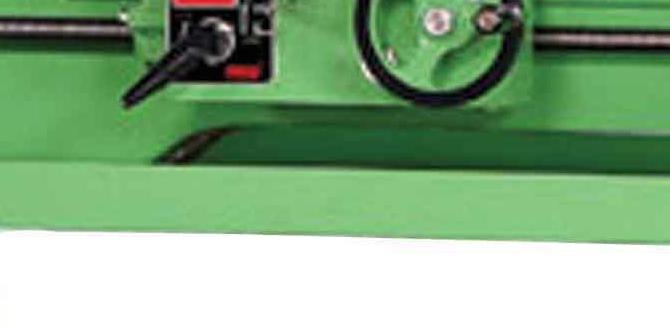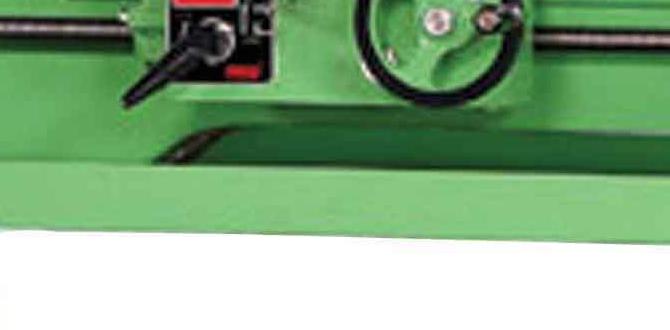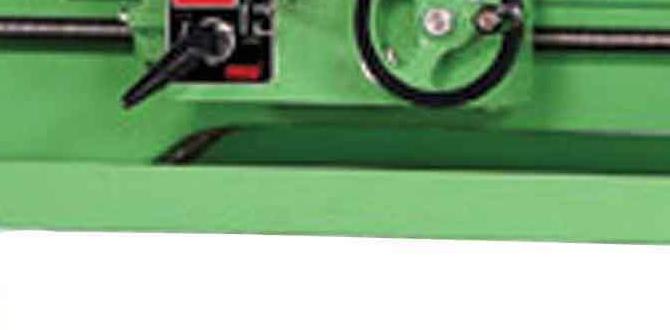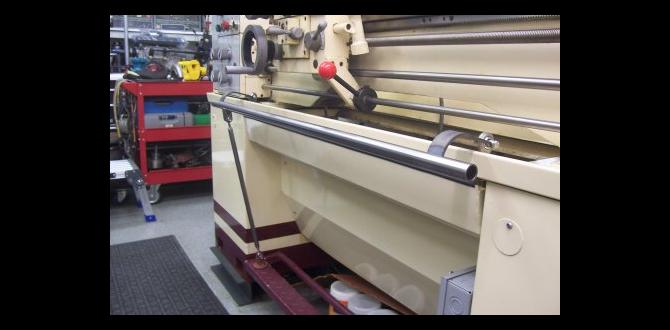Best Wood Lathe Duplicator for Furniture Projects
Achieving flawless symmetry and consistent replication in your furniture projects can be a daunting task, especially when working with turned wooden components. This is where the magic of a wood lathe duplicator for furniture projects truly shines. These ingenious attachments transform a standard wood lathe into a powerful tool for mass-producing identical turnings, from delicate table legs to robust bedposts. Whether you’re a seasoned woodworker looking to streamline production or a hobbyist aiming for professional-grade results, understanding the benefits and types of wood lathe duplicators is key to unlocking your furniture-making potential.
The primary appeal of a wood lathe duplicator lies in its ability to eliminate the tedious and error-prone process of meticulously measuring and copying each piece. Instead of relying on freehand skills or multiple template jigs for every single turning, a duplicator allows you to craft a single master pattern. The duplicator then guides your cutting tool precisely along the contours of this master, ensuring that every subsequent piece matches it perfectly. This not only saves an immense amount of time and effort but also guarantees a level of precision that is difficult to achieve consistently by hand, especially for larger or more complex projects. For furniture that requires multiple matching turned elements, such as a set of dining chair legs or a collection of decorative spindles, a duplicator is an invaluable asset.
Understanding How a Wood Lathe Duplicator Works
At its core, a wood lathe duplicator operates on a simple yet effective principle: replication. Most duplicators consist of a template carrier and a tool carriage. The template carrier holds your master piece – the perfectly shaped original turning you want to copy. This master can be anything from a simple dowel with marked outlines to a fully formed wooden component. The tool carriage holds your cutting tool. As the lathe spins the workpiece blank, a sensing mechanism on the tool carriage, often a stylus or roller, follows the contours of the master piece on the template carrier. This tracing action is translated to the cutting tool, which is mounted on the same carriage, guiding it to remove wood from the blank and shape it identically to the master.
The sophistication of these systems can vary. Some are relatively basic, relying on physical contact between the stylus and the master. Others incorporate more advanced mechanisms, offering smoother tracking and greater precision. Regardless of the specific design, the fundamental goal remains the same: to transfer the form of the master to the new workpiece with unwavering accuracy. This makes it an indispensable tool for anyone undertaking furniture projects where uniformity is paramount.
Types of Wood Lathe Duplicators
When considering the best wood lathe duplicator for furniture, you’ll encounter a few distinct types, each with its own advantages:
Single-Axis Duplicators: These are the most common and generally the most affordable. They allow you to replicate the profile of the master along a single axis (lengthwise). This is ideal for turning symmetrical shapes like table legs, spindles, and banisters. The master and the workpiece are mounted parallel to each other, and as the tool follows the master, it shapes the workpiece.
Two-Axis Duplicators: For more complex shapes that require replication in both diameter and length variations, a two-axis duplicator offers greater versatility. These systems are more intricate and can replicate profiles that change in diameter along their length. While more expensive and complex to set up, they open up possibilities for more intricate furniture components.
Manual vs. Powered Duplicators: Manual duplicators require the user to physically guide the cutting tool carriage along the master template. This still offers significant advantages in terms of consistency over freehand turning but requires more user input. Powered duplicators, on the other hand, often use a motor to move the tool carriage, providing an even smoother and more automated duplication process. For high-volume production, powered systems can be a significant time-saver.
Choosing the Best Wood Lathe Duplicator for Your Needs
The “best” wood lathe duplicator for furniture projects is subjective and depends heavily on your specific requirements, budget, and the types of furniture you intend to create. Here are crucial factors to consider:
Lathe Compatibility: Not all duplicators are universal. Ensure the duplicator you choose is compatible with your specific wood lathe model. Check mounting points, bed rail widths, and overall size requirements.
Master Material: Some duplicators are designed for specific master materials (e.g., wood, metal, plastic). Consider what you’ll be using for your masters and choose a duplicator that accommodates it well.
Precision and Accuracy: For furniture making, precision is key. Look for duplicators with robust construction, smooth-moving carriages, and a reliable tracking mechanism. Reading reviews and watching demonstrations can help gauge the accuracy of a particular model.
Ease of Use and Setup: A duplicator should simplify your workflow, not complicate it. Consider how easy it is to mount, set up your master, and make adjustments. A steep learning curve can offset the time-saving benefits.
Budget: Wood lathe duplicators range in price from a few hundred dollars to well over a thousand. Determine your budget beforehand and research options within that range. Investing in a higher-quality duplicator can pay for itself in time saved and improved results for prolific furniture makers.
* Types of Furniture Projects: If you primarily make simple turned legs or spindles, a single-axis duplicator will likely suffice. If your furniture designs incorporate more complex turned elements with varying diameters along their length, a two-axis system might be necessary, though these are less common for typical furniture projects and more geared towards specialized turning.
Ultimately, a wood lathe duplicator is an investment that can significantly enhance your furniture-making capabilities. By understanding their functionality and carefully considering your needs, you can select the ideal wood lathe duplicator for furniture projects and elevate your craftsmanship to new heights of consistency and efficiency.





